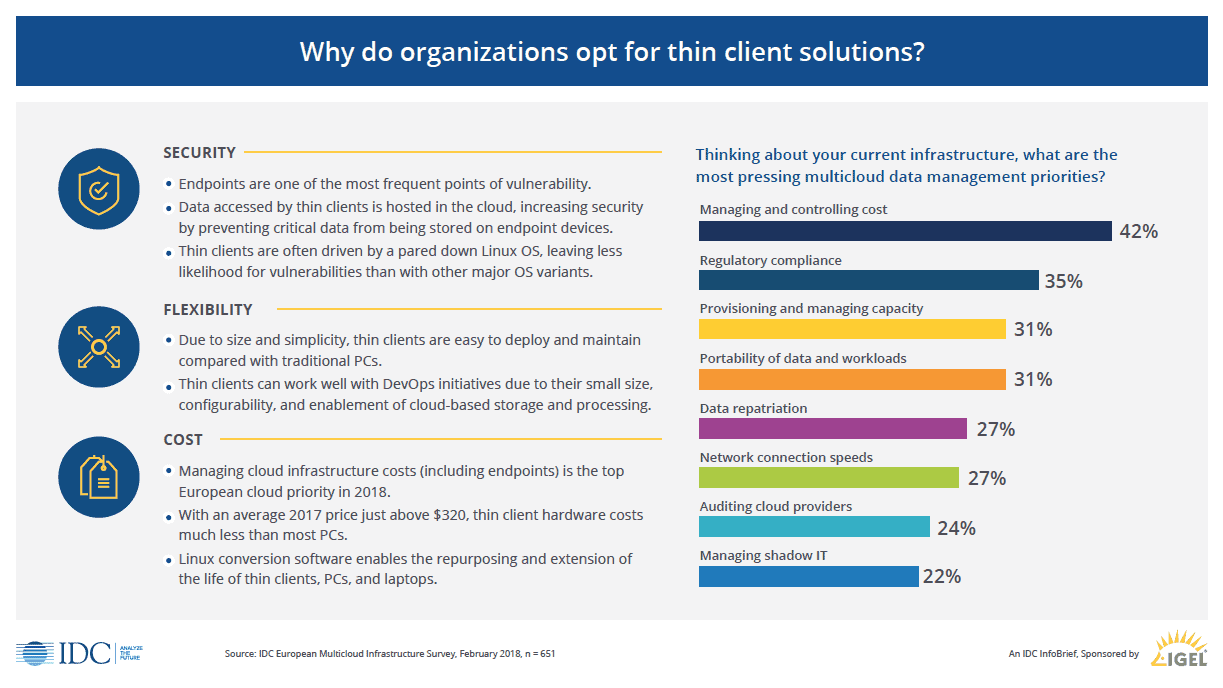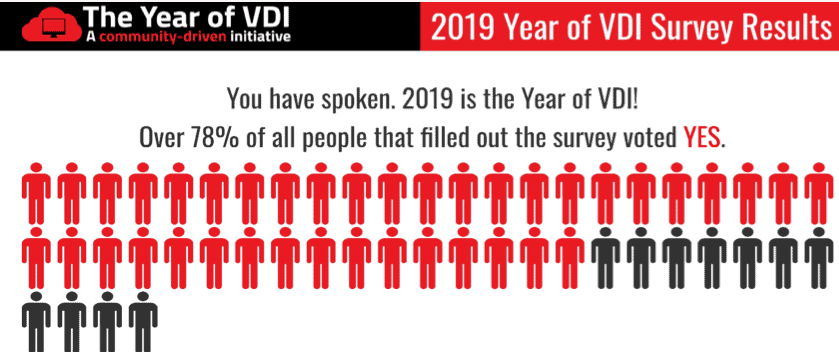IGEL Blog

Three Priorities Driving Endpoint Adoption
Endpoints are a great story of how technology can successfully evolve to help drive efficiency and innovation in end user computing (EUC).Today, endpoints have evolved into modern, Linux OS-driven, affordable devices that offer a simple, secure and flexible solution to delivering EUC.

These attributes are attracting a new generation of customers looking for more ways to shift IT budgets from CAPEX to OPEX. Being nimble and competitive now demands untethering from heavy hardware costs and embracing software-driven solutions that can keep pace with digital transformation initiatives. It also means deploying endpoint solutions that can quickly be brought online, with virtually no disruption to workflow.
All these driving forces have resulted in significant market growth. According to IDC, “Worldwide endpoint revenues grew 22% in 2017 to nearly $450 million, propelled by midmarket vendors issuing software innovations such as modular control over functionalities and automatic OS updates.”
In new research on the global endpoint market, IDC found that organizations are deploying endpoints to benefit from cost savings in managing and maintaining devices. Due to regulatory requirements and the need for data security, researchers noted that healthcare, education, and financial services sectors are primary verticals for endpoints since these devices enable easy patching as well as access control.
Key Drivers in Market Adoption
IGEL is experiencing its own robust market growth as organizations respond to its approach to EUC: a secure, Linux-OS endpoint solution that can repurpose legacy equipment, support virtualization and enable a consistent user experience across multiple devices.
IDC cites three specific priorities driving endpoint adoption, priorities our customers share with on a regular basis:
Security. In its research, IDC found that 40% of organizations cite security and compliance as a top priority for their organization in 2018. “The increased number of cyberattacks globally and the introduction of more stringent regulations such as General Data Protection Regulations (GDPR) in the EU has put this category at the top of the priority list.”
Organizations are particularly concerned about endpoint devices, IDC noted, since they remain one of the most frequent points of vulnerability in enterprise environments, making it key to find hardware and software solutions that protect endpoint devices from attack.
These security concerns speak to the heart of IGEL’s Linux-OS driven endpoint solutions. The IGEL OS is a read-only file system; embedded security features like two-factor authentication ensure every boot-up is safe. We’re solidly behind Linux OS because it is superior to other OS alternatives. It can be customized to provide direct updates and patches, offering less vulnerability and more security. The IGEL OS also meets the UEFI Secure Boot security standard, validated and signed by Microsoft.
Flexibility. Endpoints continue to replace PCs and other hardware due to their size and simplicity. They can be deployed in a matter of minutes, require a fraction of the maintenance traditional PCs demand, and they offer developers easy configurability. Combined with a Linux OS, endpoints provide a varied platform upon which developers can easily test new software.
Linux continues to gain advocates. Microsoft is among those coming around to Linux and is now offering a Linux open source platform. IGEL salutes this broadening of Linux’s presence for both hardware and software-driven, endpoint solutions. It will lead to more innovation and that is a benefit for all organizations looking to deploy endpoint devices flexible enough to accommodate accelerated development, in a secure environment.
Cost. Endpoint solutions offer organizations the attractive combination of costs much lower than a PC, and the ability to extend the life of costly hardware investments, thus helping shift from CAPEX to OPEX. IGEL, for example, offers its IGEL UDC3 endpoint conversion software, which will convert existing x86-based systems into IGEL OS-powered endpoints. Its IGEL UMS further reduces costs by saving IT support time. A single, centralized console can manage thousands of endpoints.
Reducing costs is a global concern. IDC researchers found that managing cloud infrastructure costs (including endpoints) is the top European cloud priority in 2018.
Endpoint Priorities are Clear
Organizations are struggling with how to modernize their EUC environment without adding burdensome CAPEX expenditures. Endpoint solutions, driven by a flexible, secure Linux OS, offer organizations a means to further deploy virtualization at a cost far less than adding PCs or other costly devices.
Take a moment to review the IDC report, Linux and the Endpoint security and optimization Market.
We welcome your thoughts on endpoints and Linux OS. Contact me at ayres@igel.com.


